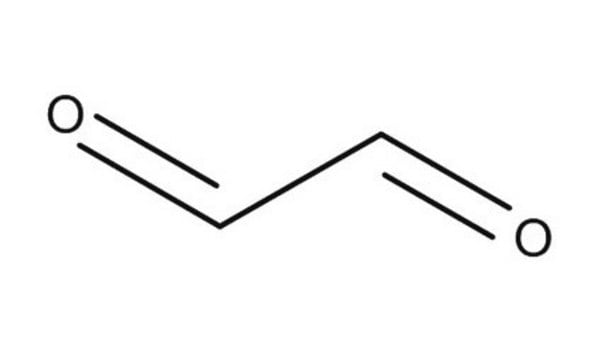W296902
Pyruvaldehyde solution
40 wt. % in H2O
Synonyme(s) :
Methylglyoxal solution, Acetylformaldehyde, Pyruvaldehyde, Pyruvic aldehyde
Sélectionner une taille de conditionnement
48,80 €
Sélectionner une taille de conditionnement
About This Item
48,80 €
Produits recommandés
Source biologique
synthetic
Qualité
Halal
Concentration
40 wt. % in H2O
Indice de réfraction
n20/D 1.41
Densité
1.178 g/mL at 25 °C
Application(s)
flavors and fragrances
Documentation
see Safety & Documentation for available documents
Allergène alimentaire
no known allergens
Propriétés organoleptiques
caramel
Température de stockage
2-8°C
Chaîne SMILES
[H]C(=O)C(C)=O
InChI
1S/C3H4O2/c1-3(5)2-4/h2H,1H3
Clé InChI
AIJULSRZWUXGPQ-UHFFFAOYSA-N
Vous recherchez des produits similaires ? Visite Guide de comparaison des produits
Catégories apparentées
Description générale
Clause de non-responsabilité
Mention d'avertissement
Danger
Mentions de danger
Conseils de prudence
Classification des risques
Eye Dam. 1 - Met. Corr. 1 - Muta. 2 - Skin Sens. 1
Code de la classe de stockage
8A - Combustible corrosive hazardous materials
Classe de danger pour l'eau (WGK)
WGK 1
Point d'éclair (°F)
Not applicable
Point d'éclair (°C)
Not applicable
Équipement de protection individuelle
Eyeshields, Faceshields, Gloves, type ABEK (EN14387) respirator filter
Faites votre choix parmi les versions les plus récentes :
Déjà en possession de ce produit ?
Retrouvez la documentation relative aux produits que vous avez récemment achetés dans la Bibliothèque de documents.
Les clients ont également consulté
Active Filters
Notre équipe de scientifiques dispose d'une expérience dans tous les secteurs de la recherche, notamment en sciences de la vie, science des matériaux, synthèse chimique, chromatographie, analyse et dans de nombreux autres domaines..
Contacter notre Service technique















